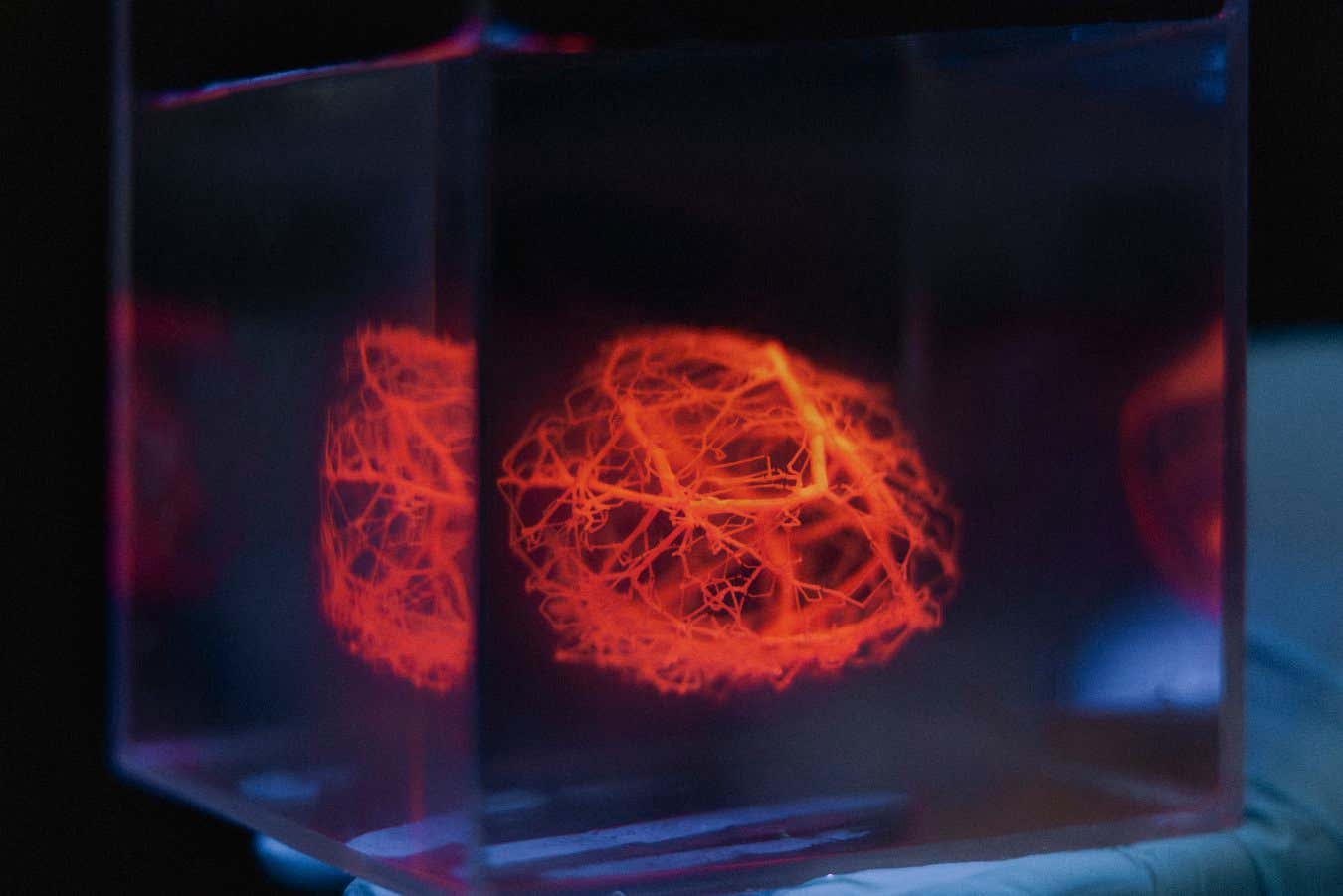
A blood vessel network designed by a computational model
Andrew Brodhead
A computational model that could rapidly design a blood vessel network for any 3D-printed organ may take us a step closer to transplanting artificial livers, kidneys or hearts without the need for a donor.
People with organ failure often require organ transplants, but only 10 per cent of the global transplant demand is being met. To fill this need, scientists are developing ways to 3D-print organs in the lab. But these require blood vessel networks to stay alive, and existing experimental methods for designing these take days or even weeks.
To address this, Alison Marsden at Stanford University in California and her colleagues built a computational model that can design these networks for any organ based on a mathematical law that describes how blood vessels branch into smaller ones in the body.
They tested their approach by having the model design a network of 25 vessels for a 1-centimetre-wide ring-shaped structure that had been 3D-printed from kidney cells, which it did in just a few minutes.
The team then printed the vessel network into the ring using cold gelatin particles, before heating it to 37°C (98.6°F), which melted the gelatin and left a network of hollow, 1-millimetre-wide channels that mimicked blood vessels. The researchers then continuously pumped a liquid containing oxygen and nutrients through the channels to simulate normal blood flow.
A week later, there were around 400 times more alive cells in the ring compared with an identical ring of kidney cells without the vessels, which the team had also bathed in the blood-like fluid.
“We could keep the cells alive that were in close proximity to the vessels,” says Marsden. Those that were further away died because it isn’t yet possible to print the smaller, more highly branched vessels that are needed to supply nutrients to those regions, she says. The team is exploring ways to address this.
“They’re definitely pushing the boundary of what’s possible,” says Hugues Talbot at Paris-Saclay University in France. The approach could one day allow scientists to design the vessel network for a full-sized organ in hours, rather than days or weeks, he says. “Vessel [networks] designed in this way could be used in the future to replace, or at least complement, organs that could be grown in the lab.”
First, the researchers need to develop ways to print these blood vessel networks into large organs. If all goes well, Marsden says they hope to test 3D-printed organs in pigs within about five years.
Topics:
Source link : https://www.newscientist.com/article/2484056-complex-blood-vessel-nets-could-be-3d-printed-for-artificial-organs/?utm_campaign=RSS%7CNSNS&utm_source=NSNS&utm_medium=RSS&utm_content=home
Author :
Publish date : 2025-06-12 19:00:00
Copyright for syndicated content belongs to the linked Source.